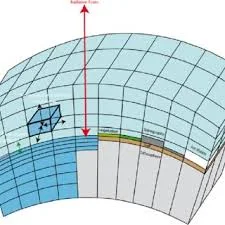Definition:Wind load refers to the pressure exerted by wind on a building's structure. It's a crucial factor to consider during building design to ensure the structure can withstand wind forces without damage.
Click the Translate button(see right) on this post to set your Own Language to understand more perfectly!!
Wind Load Calculator
Continue Definition:
Wind Load on Buildings
Wind load refers to the pressure exerted by wind on a building's structure. It's a crucial factor to consider during building design to ensure the structure can withstand wind forces without damage. Here's a breakdown of the key factors involved in calculating wind load:
Building Height (m): Taller buildings experience greater wind forces due to increased exposure.
Building Width (m): The width of a building perpendicular to the wind direction can influence the wind load distribution.
Wind Speed (m/sec): The force of the wind increases with higher wind speeds.
Sample Values:
Building Height: 20 meters
Building Width: 15 meters
Wind Speed: 40 meters per second (equivalent to 144 km/h or 89 mph)
Additional Considerations:
Building Shape: Blunt shapes experience higher wind loads compared to streamlined structures.
Topography (surrounding terrain): Buildings on hills or open plains experience stronger winds compared to those in valleys or sheltered areas.
Building Code Requirements: Local building codes specify wind speed values for different return periods (e.g., 50-year wind) that must be considered in design.
Calculation Example (Note: This is a simplified example. Actual wind load calculations involve complex engineering principles and specialized software):
Reference Local Building Code: Look up the design wind speed for your specific location and building height based on the building code.
Calculate Wind Pressure:
Wind Pressure (p) = 0.5 * ρ * V^2
Where:
p = Wind pressure (Pa)
ρ = Air density (kg/m³) (approximately 1.225 kg/m³ at sea level)
V = Wind speed (m/sec)
Using the sample values and assuming sea level conditions:
p = 0.5 * 1.225 kg/m³ * (40 m/sec)²
p = 980 Pa (Pascals)
Note: This is the pressure due to wind speed only. Building codes often have additional factors to account for gusts and other wind effects.
Calculate Wind Load:
Wind Load (F) = Pressure (p) * Area (A)
Where:
F = Wind load (Newtons)
p = Wind pressure (Pa) converted to N/m² (multiply Pa by 0.001)
A = Projected area of the building wall normal to the wind direction (m²)
Area calculation depends on building shape and wind direction. Let's assume we're calculating the wind load on a sidewall with a width of 15 meters and a height of 20 meters:
A = 15 m (width) * 20 m (height)
A = 300 m²
Wind Load (F) = 0.98 N/m² * 300 m²
F = 294,000 N
This is a simplified example for educational purposes only. Actual wind load calculations for buildings involve more complex factors and should be performed by qualified structural engineers.
Suggestions:
Always consult with a structural engineer when designing or constructing a building to ensure it can withstand wind loads according to building codes and safety standards.
Utilize wind load analysis software for more accurate calculations considering factors like building geometry and local wind patterns.
Consider using wind mitigation strategies during construction, such as using aerodynamic shapes, installing hurricane straps, or reinforcing roof connections, to improve a building's wind resistance.
By understanding wind load and its contributing factors, you can appreciate the importance of proper structural design and construction practices to ensure buildings can safely withstand wind forces.
How is it possible to earn money using the knowledge of Wind Load Calculation?????
While you wouldn't directly sell "wind load calculations" as a service, your knowledge of wind load principles can be valuable in several ways within the construction industry:
Structural Engineering Services:
Structural Engineer: Offer your expertise to design buildings that can withstand wind loads. This includes:
Wind load analysis: Using your knowledge of wind speed, building geometry, and building codes, calculate the wind forces acting on the structure.
Structural design: Design structural elements like beams, columns, and walls with sufficient strength and stiffness to resist wind loads safely.
Construction documentation: Prepare design drawings and specifications that incorporate wind load considerations for construction crews.
Work with Architectural Firms: Collaborate with architects to ensure their designs consider wind load requirements. You can:
Review architectural plans: Analyze building shapes and proposed materials to assess potential wind load challenges.
Provide wind load recommendations: Advise on design modifications or material choices to optimize wind resistance.
Collaborate on wind mitigation strategies: Work with architects to integrate features like hurricane straps or aerodynamic shapes into the design.
Construction Management and Inspection:
Construction Project Manager: Manage construction projects with wind load considerations. This includes:
Reviewing engineering plans: Ensure wind load calculations and design specifications are properly incorporated into construction documents.
Coordinating with structural engineers: Communicate any concerns or questions related to wind load considerations during construction.
Site inspections: Verify that construction practices follow the wind load design specifications, particularly for crucial elements like roof connections.
Building Inspector: Ensure buildings comply with building codes related to wind loads. This might involve:
Reviewing engineering calculations: Verify the wind load analysis and structural design meet code requirements.
Inspecting construction practices: Check for proper implementation of wind mitigation features as specified in the design.
Issuing building permits: Grant permits only when the building is designed and constructed to withstand the expected wind loads.
Additional Revenue Streams:
Develop and deliver educational workshops: Offer training sessions for architects, builders, and inspectors on wind load principles and building code requirements.
Create online resources: Develop online tutorials or guides on wind load calculations and wind mitigation strategies for a wider audience.
Consulting for Wind Mitigation Companies: Advise companies that manufacture or install wind mitigation products on their effectiveness based on wind load analysis.
Success Factors:
The success of these approaches depends on several factors:
Engineering Expertise: A strong foundation in structural engineering principles and wind load calculations is crucial.
Communication Skills: The ability to explain complex engineering concepts to architects, builders, and inspectors is essential.
Building Code Knowledge: Staying updated on the latest building codes and wind load requirements in your region is important.
Building Relationships: Developing trust and credibility within the construction industry is key to attracting clients and projects.
By combining your knowledge of wind load calculations with other relevant skills, you can establish yourself as a valuable resource in the construction industry and earn a living by ensuring buildings are safe and resilient against wind forces.
Do YOU Want To Earn Money In Various Ways, Click The Link & Explore Your Field of Interest!!!








No comments:
Post a Comment